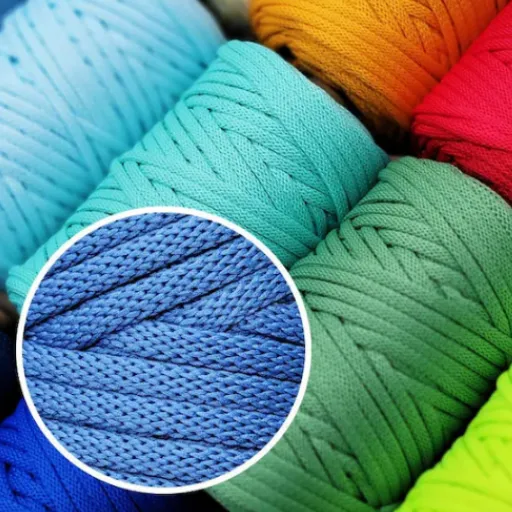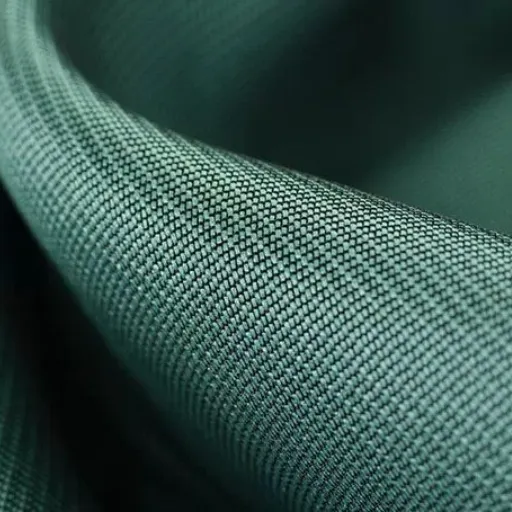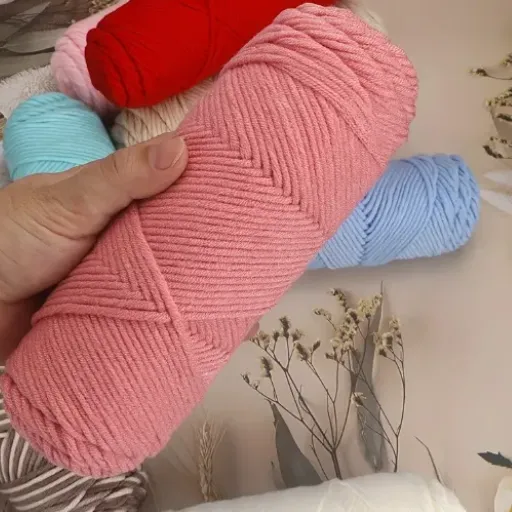The fabric made of polyester is one of the most common in the world, but its reputation often raises questions and intrigues. The first question that comes to mind is what polyester feels like. Is it soft, rough, breathable, or plasticky? Knowing the texture and the characteristics of polyester can prompt even the least interested people—like common shoppers and even fashion lovers—to make better choices when it comes to wearing and using home textiles. This article takes a very close look at the sensory experience of polyester and analyzes its features, advantages, and possible disadvantages. So, whether you are thinking about adding a new piece of clothing to your wardrobe or are just curious to learn more about this versatile material, this guide is going to provide you with all the necessary information.
Introduction to Polyester
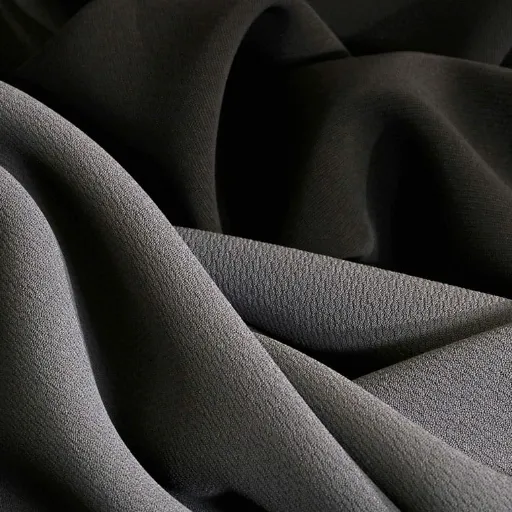
What is Polyester?
Polyester is a man-made fiber that mainly comes from petroleum products. The process involves a series of chemical reactions between petroleum, air, water, and of course, the polymer that results is (the fiber) spun into long durable fibers. Then these fibers are woven or knitted into fabrics and used for various applications such as clothing, home textiles, and even industrial materials.
The strong and resilient nature is one of the iconic traits of polyester. The fabric is very hard to stretch, shrink, or wrinkle which in turn makes it a less demanding and longer-lasting textile. Also, being very quick-drying and moisture-resistant, it has become a basic fabric for sportswear and outdoor clothes. Its lightweight characteristic is yet another reason why it’s very versatile, as it can be blended with natural fibers like cotton to enhance functionality and comfort.
Important Note: Polyester does have some downsides though it presents many advantages. For example, it is less permeable than natural fibers and thus can be somewhat hot and uncomfortable in humid weather conditions. Moreover, being a plastic-based material, polyester is non-biodegradable which is why it is considered eco-unfriendly. Nevertheless, the upsurge in adoption of recycled polyester has resulted from the technological breakthrough in recycling which, in its own way, has helped lessen the environmental impact of polyester.
History and Development of Polyester
The story of polyester takes us to the 20th century, which was a period of rapid development of synthetic materials. In 1941, British scientists John Rex Whinfield and James Tennant Dickson were the first to develop polyester. They discovered and patented a polyester fiber called polyethylene terephthalate (PET). The invention of PET was a big step in textile development, as it not only provided an option to natural fibers but also allowed the production of fabrics that were very durable and versatile in large quantities.
The 1950s and 1960s were the decades when polyester gained huge popularity, particularly because of the growing consumer demand for wrinkle-resistant and easy-care clothing. Shaping, shrinking, and drying fast qualities of polyester made it a very attractive choice for everyday garments. Moreover, technological breakthroughs opened up the possibility of mixing polyester with natural fibers like cotton, thus adding to its comfort but without losing durability. Eventually, polyester not only became a major fashion fabric but also a material for various industrial applications like packaging, home interiors, and automotive upholstery.
The manufacture of recycled polyester in the past few decades is a reflection of the ever-increasing environmental concerns as well as the advances in material science. The process of turning post-consumer plastic bottles and other waste materials into recycled polyester has dramatically decreased the consumption of virgin PET, thus cutting down the use of energy and emitting carbon dioxide to a lower level. This transition is indicative of an ongoing effort to make polyester less of a problem and more of a solution in the area of sustainability, thus assuring that the material will keep evolving in accordance with the environmental requirements.
Common Uses of Polyester Fabric
Polyester fabric, thanks to its durability, affordability, and versatility, has become one of the most common and widely used materials across different industries. Some of the main uses are as follows:
- Apparel and Textiles: The polyester fiber occupies a prominent place in the fashion industry and clothing sector, whose garments include shirts, dresses, sportswear, and outerwear among others. The fiber’s moisture-wicking, wrinkle resistance, and stretch properties are the main factors why it is an activewear preferred fiber. According to a report published in 2023, the global fiber market is composed of roughly 54% polyester, thus surpassing the other fibers including cotton.
- Home Furnishings: Polyester is also made up of curtains, upholstery, bed linens, and carpets – all items that are primarily considered home furnishing fabrics. In addition, polyester is a great choice for many households because of its resistance to stains and its ability to keep colors bright. Moreover, the durability of the polyester will allow children’s and pets’ daily activities to not degrade the life span of such products.
- Industrial Applications: The industrial sector gains a lot from polyester’s strength and adaptability. It is used for the making of conveyor belts, ropes, safety belts, tire reinforcements, and geotextiles. The toughness of the fabric under adverse conditions makes it suitable for heavy-duty applications.
- Packaging: Recycled polyester, or rPET, is increasingly being used in conjunction with packaging applications like that of being a lightweight plastic bottle, food container and film. This eco-friendly use of polyester helps win the battle of minimizing plastic pollution and also indirectly supports the efforts to eliminate landfill waste.
- Automotive Industry: The automotive industry frequently uses polyester in the form of seat belts, seat covers, air filters, and insulation. By allowing the vehicles’ overall weight to be less polyester not only contributes to the fuel efficiency but also is a factor in the case of the lighter vehicle concept.
The development of recycling technology continues to strengthen the position of polyester as an eco-friendly material. The latest figures show that switching from virgin polyester to recycled polyester can lead to a reduction of energy and greenhouse gas emissions by as much as 59% and 32% respectively. Thus, with all these advantages and constantly growing application areas, polyester is still a vital material in the contemporary world.
Understanding the Feel of Polyester

What Is the Sensation of Polyester?
Polyster has a universal smoothness and also a little slickness in its touch, with a varying texture from soft and lightweight to strong and rugged depending on the way the fabric is woven or treated. It is a synthetic fiber, so its feel may sometimes be less like cotton or silk, but new methods of production have greatly increased its comfort and amount of use in different terms.
The polyesters’ ability to let air through can be quite different. It is not as good as naturals in allowing air to pass but it can feel cooler and drier during exercise in the case of enhancements like moisture-wicking technology. Besides, its quick-dry nature along with resistance to wrinkles has contributed to the practical attractiveness of this fabric for both casual and functional clothing.
The texture of polyester can also be developed so that it resembles other materials. For example, it can be made to feel like lavish velvet or sleek satin thus making it capable of being used in various ways. The fact that polyester could offer different levels of texture and comfort has attracted people from all over to use it for their clothes as well as home decorations.
Factors Influencing Polyester’s Texture
Polyester texture is influenced by a variety of factors that make its feel, look, and use less restricted. The leading factor is the manufacturing method. Depending on which method is chosen, polyester fibers can be made to have different textures, such as smooth, shiny, soft, and dull. Weaving, knitting, and mixing with other fibers are some of the techniques used to give the texture that is suitable for certain applications, for instance, silky fabric for clothes or coarse textures for upholstery.
Apart from the above, the use of chemical treatments and finishes is another very important factor. Polyester can be coated with special substances to change its outer properties, such as making it softer, giving it a velvet feel, or even making it more durable and resistant to abrasion. Such treatments also help to make the fabric more appealing, thus widening its range of applications, from fashion to interior decoration.
Moreover, blending polyester with natural or synthetic fibers can have a remarkable effect on its texture. By mixing with cotton, wool, or spandex for instance, polyester gets a different softer side to it. This makes it more suitable for the diverse needs of clothing, furnishing and industrial materials, thus giving the user a combination of function and style. This adaptability of texture through blending contributes to the continuous popularity of polyester.
User Perceptions of Polyester Feel
User perceptions of the feel of polyester can differ tremendously and largely depend on the type of fabric and its quality. The majority of users characterize 100% polyester as a fabric that is smooth, somewhat synthetic, and sometimes less breathable when compared to natural fibers like cotton. The user experience is even worse with low-grade polyester which can be quite coarse or stiff. On the other hand, the innovation of the textile industry has not only increased the degree of polyester’s softness but also by a lot more than the natural fabrics in terms of comfort.
When it comes to combining with other fibers, the users perceive this as a major improvement in the feel of the fabric. Taking for instance polyester-cotton blends, these are the ones that are usually lauded for their balancing act between softness and durability. The fabric made from this blend embodies the natural comfort of cotton along with the wrinkle-free and lightweight properties of polyester, thereby making it an everyday staple. The same goes for spandex blends which inclusive of stretching and flexibility, improving the fabric’s comfort and application in activewear and fitted garments. The mixture of fibers is the most important factor determining overall satisfaction with the texture of polyester.
At last, how the feel of polyester is perceived is mainly based on its purpose and individuals’ likes and dislikes. There is the case of the users prioritizing the longevity of the material such as not wrinkling, not shrinking, and being stain-resistant, whereas others would rather have the softness of the natural fibers or the blended fabric options. The capability of the fabric to change and improve through design and innovation continues to alter and improve user perceptions guaranteeing its presence in different sectors. The polyester remains a widely used and cherished material because it can meet the different demands and preferences.
Comparing Polyester with Other Fabrics
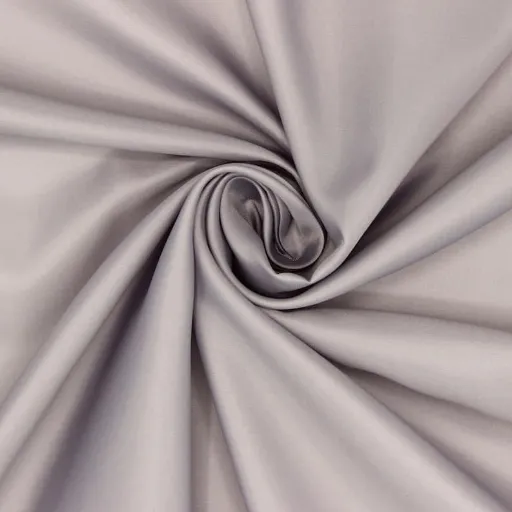
Polyester vs. Cotton: A Detailed Comparison
Polyester and cotton rank among the most used fabrics, both having their specific and at times even opposite characteristics that allow for different users with different tastes to get what they want. Synthetic fibre polyester is a very durable fabric, shrinking very little and having excellent drying properties. These features make it suitable for athletic wear, camping equipment, and items that demand high laundry frequency. Cotton, on the other hand, is a plant-based fiber that is also very soft, breathable, and comfortable. It is the best choice for people who want to use the fabric as their daily wear or bed linens because of its comfort and moisture-absorbing ability.
The most apparent difference, among others, is the fabric maintenance. Polyester is a fabric that needs very little maintenance due to its very nature. It is resistant to wrinkling, staining, and fading over the years which indicates that it is a good choice for those who are always on the lookout for garments that require minimal care yet still look good for a long time. On the flip side, cotton wrinkling, shrinking, and wearing out faster than polyester are just some of the things that require it to take care of more. While this is the case, cotton still wins hands down when it comes to comfort, as synthetic fabrics are not always able to match such a quality.
The environment is another factor in which the two vary greatly. Cotton, although a natural and biodegradable material, is still a contributing factor if the production process happens to be the resource-intensive type that uses an exorbitant amount of water and pesticides unless it is sustainably sourced. Polyester, on the other hand, is a synthetic fiber that comes from oil, making it a non-biodegradable material. Nevertheless, the production of polyester is not much water-dependent, and recycling campaigns have positively influenced its environmental impact. At last, the choice of polyester or cotton lies in the uses, the aspects of durability and comfort investing in not extinction, and the environmental footprint.
Polyester vs. Wool: Texture and Warmth
When talking about texture and warmth, wool and polyester don’t just differ a little; they are completely different and that is why the first one is perfect for certain areas and people and the latter is the opposite. Wool comes from nature – a fiber gotten from the sheep and some other animals – and is famous for its natural qualities of softness, elasticity, and thermal insulation. The air is trapped between the fibers and thus the superior warmth is provided even in cold and moist places. For this reason, wool is the best for winter garments or blankets where coziness and heat retention are the first needs.
The other way around, polyester is a man-made fiber that has a much smoother and less textured feel. Compared with wool, polyester cannot stand that much softness but it is a winner in the fields of durability and moisture-resistance. It dries fast, gets to be less wrinkled, and thus becomes very handy for active-wear or garments that need low-maintenance care. On the other hand, polyester is not so good an insulator as wool is, so it may not keep the warmth as well in the colder places.
The comparison of the two leads us to the conclusion that one’s wool and polyester choice is mostly about the intended usage. Wool is the one that is usually picked for the situations that demand warmth and comfort, like dressing for winter. On the other hand, polyester is the one that injects very light and durable, and also moisture-resistant qualities into the garments for active outdoor use or settings.
Polyester vs. Silk: Smoothness and Luxury
Among the different attributes, silk and polyester have their own unique properties in terms of smoothness and luxury. The natural fiber silk is famous for its soft and smooth texture with a lustrous appearance. The luxurious touch of silk comes from the process in which it is produced by silkworms creating a fabric that is lightweight, breathable, and hypoallergenic. These characteristics make silk an excellent option for those who prefer both elegance and comfort.
On the contrary, polyester is a man-made fiber that is produced through chemical processes, thus making it highly durable and resistant to creases, as well as to dirt. Although modern production techniques allow the silk-like smoothness of polyester, it can’t achieve the full extent of silk’s natural luster or its breathable quality. Still, polyester is the cheaper and low-maintenance option that gives a practical alternative to anyone desiring sleekness without the whole luxury.
Deciding between silk and polyester boils down to individual priorities. If luxury, softness, and a high-end aesthetic are major concerns, silk is the best option. On the other hand, polyester is the preferred choice due to its durability, economic factor, and less labor-intensive care. In the realm of fabrics, both have their merits, catering to different needs and wants in clothing and home textiles.
Types of Polyester Fabrics
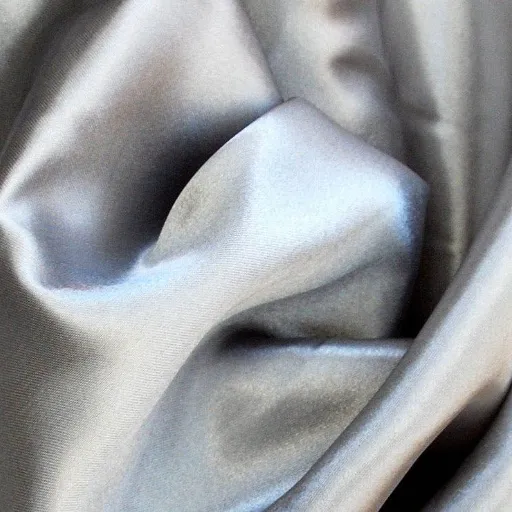
Different Types of Polyester
Various kinds of polyester fabric are available in the market, each one having its own unique properties that are suitable for certain applications. Below is a list of some of the most common polyester fabrics used worldwide:
| Type of Polyester | Description |
|---|---|
| PET (Polyethylene Terephthalate) | This is a type of polyester that is most commonly used all around the world and is very much known for its universal usage. PET polyester is widely used in the manufacturing of clothes, bottles, and many industrial applications. It is the preferred material in the textile industry because of its long life and resistance to wrinkles. |
| PCDT (Poly-1, 4-cyclohexylene-dimethylene terephthalate) | PCDT polyester is considerably softer and more elastic in comparison with PET, which gives it the ability to be used in heavier fabrics like curtains and upholstery. However, because of its higher price, it is not as prevalent as PET. |
| Microfibers | The polyester microfibers fibers are of super fine quality, and they are sometimes thinner than a human hair. This type of polyester is very much used in the production of athletic wear because it has excellent moisture-wicking properties and is lightweight. It is also very much used in the manufacturing of cleaning products and furniture upholstery. |
| Recycled Polyester (rPET) | Recycled polyester is made from recycled materials. It is produced by recycling PET plastic bottles. It is an eco-friendly alternative to virgin polyester. It not only prevents plastic from going to waste but also uses less energy in its production process. Therefore, it is offered as a sustainable option to the fashion industry and others that are keen on reducing their ecological footprint. |
| Polyester Blends | Polyester is commonly blended with other fibers such as cotton, wool, or spandex, which adds durability, flexibility, or comfort to the final product. These blends are used in casual clothing, uniforms, and sportswear due to their low cost and easy maintenance. |
When consumers and industries become aware of the different types and their uses, they can then make choices that will best suit their needs, whether it be sustainability, durability, or functionality.
Properties of Various Polyester Fabrics
Polyester fabrics do have a lot to offer including durability, they do not shrink, and they are very light. These characteristics are very important for polyester to become the main material for clothing and other textiles that are going to be used and washed frequently. Also, it is used in sports and home goods because it does not wrinkle, retains its shape, and being perceived as valuable is another of its attributes.
One of the main characteristics of polyester is that it can absorb moisture and expel it through its outer layer. That is why sportswear and activewear are mainly made from this fabric because it keeps the person dry and comfortable by taking sweat away from the body. Indeed, the fact that polyester is non-absorbent leads to faster drying times than those of natural fibers, cotton, for instance. At the same time, this water-resistant property makes it perfect for making outdoor gear and weatherproof clothing.
Moreover, polyester can still be altered to cater to certain specific needs. To cite an instance, the blending of polyester with other fibers may result in increased elasticity, improved breathability, or softness according to the intended purpose. The production of textiles from recycled polyester or rPET is a trend albeit a very slow one, which is going to be favored by those who are environmentally conscious as well as the average consumers who are looking for fashionable and versatile materials.
Polyester Blends and Their Benefits
Polyester blends, in addition to being a bit cumbersome, are highly effective in the application of producers and consumers alike due to their multifaceted aspects. The addition of polyester to the cotton, spandex, or wool category does of course lead to the improvement of the fabric’s properties. The example of the coexistence of polyester and cotton often speaks of durability, less shrinkage, and retention of the color of the material through time. At the same time, the mixes with spandex introduce the aspect of elasticity to a greater degree, thus making the garments, in this case, soaking and getting less opportunity for an active lifestyle.
The moisture-wicking property of polyester blends is extremely important among the benefits that these materials have to offer. The polyester, even in its pure form, possesses hydrophobic characteristics, that is to say, water is repelled and the material dries quickly. This trait is also nearly perfected in combinations with braids like nylon or bamboo, leading to the very light, highly configured fabrics that are most suitable for sports and outdoor activities. Besides, polyester blends are mainly non-ironable and quick-to-clean which makes them smart choices for daily wear, as well as for bedrooms and living rooms.
However, there is another emerging fashion that has to do with the inclusion of recycled polyester in the blends. Designers have even been given the term rPET for this product which comes from the recycling of plastic bottles and thus lessens the problem of waste disposal. By mixing rPET with organic or eco-friendly fibers, the resulting fabric gets even more attractive for the green consumers, who value the quality and at the same time want to go for the sustainable option. The serpentine route of upscaling from being just a source of raw material to becoming an actual partner with all the benefits such as strength and versatility that blends entail, is the textile industry reaching a more sustainable practice.
Caring for Polyester Fabric

Best Practices for Washing Polyester
Polyester fabric, which is a durable, wrinkle-proof and user-friendly type of fabric, washing it correctly is one of the main factors to keep its quality. The following are some guidelines you can follow to keep your polyester items in perfect condition:
- Use Cold or Warm Water: Polyester is, as a rule, to be washed in cold or warm water with a recommended temperature range of 86°F to 104°F (30°C to 40°C). The hot water can cause the fibers to lose their strength and the material will shrink.
- Opt for a Gentle Detergent: Choose a mild detergent to ensure that the fabric is not damaged. Bleach and other strong chemicals should be avoided; only use them if necessary to remove certain stains, as they weaken the material’s strength.
- Turn Garments Inside Out: If you wash polyester garments inside out, it will reduce the friction between the garment and the other clothes during the wash cycle; hence, it will minimize pilling and keep the fabric new for a longer period of time.
- Set the Machine to a Gentle Cycle: Use the machine’s gentle or delicate cycle to protect the fibers from agitation that is too much, which may ultimately lead to the fabric being worn out.
- Avoid Overloading the Machine: Loading the washing machine too much can lead to the formation of wrinkles and the cleaning being less effective. Have enough space for the water and the detergent to circulate around freely.
- Avoid High-Dry Heat When Drying: Polyester is fast drying and does not need high temperatures. Use a low or medium heat cycle for your dryer, or air dry the items whenever possible to prevent the fabric from getting wrinkled and weakened. The perfect drying temperature for polyester is around 120°F to 150°F (49°C to 66°C).
- Remove Stains Promptly: As soon as a stain occurs, treat it with a gentle stain remover. Use a cloth or a soft brush to rub gently, and do not scrub vigorously because this may change the texture of the fabric.
- Prevent Static Cling: Static electricity is a common problem associated with polyester. However, the use of fabric softener or dryer sheet during the drying cycle can help a lot in eliminating static cling.
When polyester fabrics are washed according to these recommended best practices, they will last longer and retain their strength, softness and vibrant colors. Besides, it is eco-friendly to wash polyester only when the machine is full since that saves water and energy.
How to Maintain Polyester Fabrics
Check the care label for specific instructions on how to maintain polyester fabrics. Polyester items should be washed in cold or warm water on a gentle cycle so that the damage would be less, and the color and softness would be more. A mild detergent should be used to avoid residue buildup that could affect the fabric’s texture.
Drying polyester properly is a must to its longevity. Tumble dry on a low heat setting and remove the items promptly to minimize wrinkles. Air-drying polyester fabrics can also be done; it is gentler and helps the fabrics maintain their shape. When ironing, avoid excessive heat and instead use a low-temperature setting or a pressing cloth to prevent heat damage.
Good storage also contributes to the longevity of the polyester fabrics. Store them in a cool, dry place out of direct sunlight, since UV rays can eventually weaken the fibers. Before storage, clean and dry your polyester garments to avoid mildew or unpleasant odors. If you follow these steps, your polyester items will not only last longer but also look their best.
Common Mistakes in Caring for Polyester
Polyester fabrics have a long life, are easy to care for, nevertheless, if they are not treated right, they can still wear out very quickly. Maintaining polyester items by avoiding common mistakes will help them to keep their condition at the highest level. The most frequent errors and the latest insights to help you maintain the quality of fabric are listed below:
- ❌ Using High Heat When Washing or Drying: Polyester is not good with heat; it will melt, shrink, or warp if the temperature is really high. Recent care guidelines recommend that polyester always be washed in cold or warm water, not hotter than 104°F/40°C. Furthermore, low heat will be used for drying. Hot air can damage the fabric by making it lose its strength and softness over time.
- ❌ Skipping Fabric-Specific Detergents: You can wash the polyester with regular detergents but still, the residue can accumulate and the smell gets trapped. Research affirms that the use of detergents made for synthetic fabrics can effectively get rid of oil-based stains and smells thus providing a more potent and cleaner finish.
- ❌ Neglecting Pre-Treatment of Stains: Polyester is more prone to oil and grease absorption than natural fibers. This is the reason why many people do not consider pre-treatment very important before washing. A study recommends spot treatment with a little liquid detergent or a special stain remover and waiting before washing to avoid permanent marks.
- ❌ Leaving Polyester in Direct Sunlight for Extended Periods: Polyester can resist UV rays to a certain extent but if the exposure is very long, the fibers become weak and the color fades. Professionals suggest limiting sun drying or storing the items in shaded places to avoid fading and damage that UV rays cause through long-term exposure.
- ❌ Overloading the Washing Machine: Filling the washing machine up to the top will prevent proper agitation and water circulation and this will lead to inadequate cleaning. Studies indicate that allowing extra space for polyester garments in the machine prevents pilling and look new for a longer time.
- ❌ Ironing Without Proper Care: Heat deformation of the fibers and scorching are what can happen when high temperatures are used to iron polyester. Always use either a low heat or synthetic setting, or even better, place a pressing cloth on top of the fabric to block direct contact of the iron with the fabric.
By avoiding these common errors and complying with these updated care tips, you not only prolong the life of your polyester clothing and accessories but also keep their quality and appearance.
Frequently Asked Questions (FAQ)
Q: How is the touch of polyester versus that of natural fibers?
A: Polyester is categorized as smooth and light. Natural fibers, like cotton and wool, could feel a nice soft touch and a little breathable, while polyester feels a bit slick. It does not feel warm like wool, but those who own polyester garments would say it feels comfortable and light.
Q: Is polyester suitable for those who have sensitive skin or not?
A: A synthetic fabric, polyester, can sometimes irritate those with sensitive skin. However, lots of soft polyester blends are made for comfort and are suitable for most skin types. When choosing any polyester garment, one should always consider what specific blend of fabric is used.
Q: What is the feel difference between polyester and cotton?
A: Polyester is typically smooth to the touch and somewhat slick, while cotton is softer and more breathable. With a polyester-cotton blend, the advantages of the two fibers are combined to offer comfort along with the durability of polyester.
Q: What are the perks of wearing polyester?
A: There are several benefits polyester clothing has to offer. In being less apt to wrinkle or shrink like a natural fiber, polyester is a perfect candidate for active wear because it dries quickly, too. It is also cheaper compared to cotton and linen.
Q: Can polyester be blended with other fibres?
A: Yes, polyester blends can be made with cotton or wool. Such polyester blends enhance the feel and performance of the fabric; that is, they make it softer and more comfortable while keeping it durable like polyester.
Q: Does polyester breathe like cotton?
A: Unlike cotton, polyester does not breathe well. Cotton is a natural fiber and is breathable, yet polyester, being a synthetic material, may in certain conditions trap heat and tan badly. Then again, new technology has birthed a more breathable polyester.
Q: How should I care for polyester fabrics?
A: Caring for polyester fabrics is a breeze. They are usually safe to wash in the washing machine and dry in the dryer, without worrying about shrinking. However, never use really high heat during drying as this will cause damage to your polyester fibers. Also, be mindful that washing clothes made out of polyester will release microfibers into the environment.
Q: What are some types of polyester?
A: There are many types of polyester fabrics, which include microfiber polyester, woven polyester, and pure polyester. They offer many types of textures and benefits to cater to different preferences and uses in the world of polyester clothing and home textiles.
References
- Polyester Texture & Comfort Guide: Feel and Characteristics – A detailed guide on the texture and comfort of polyester, discussing its smoothness, durability, and variations in quality.
- What is Polyester Fabric? A Brief Introduction – An overview of polyester’s texture, describing it as coarse yet silky, with a tendency to feel slippery and clingy.
- What is Polyester Fabric: Properties, How it’s Made and More – A comprehensive resource on polyester, explaining its smooth and soft characteristics depending on the type of fibers used.









